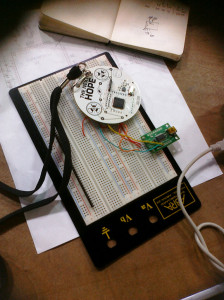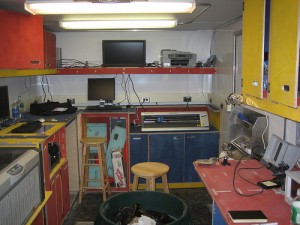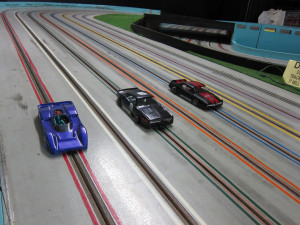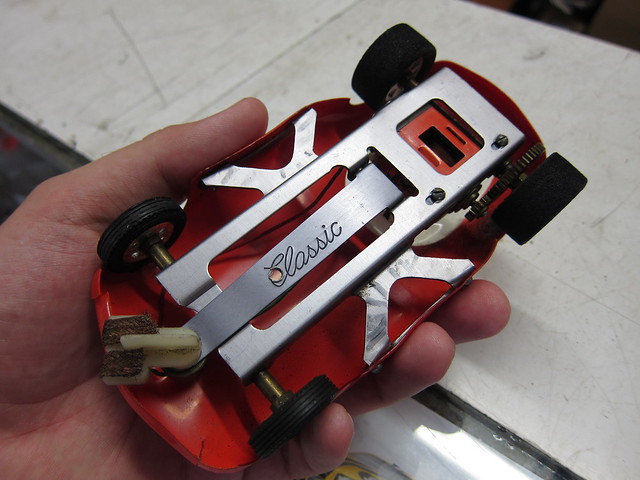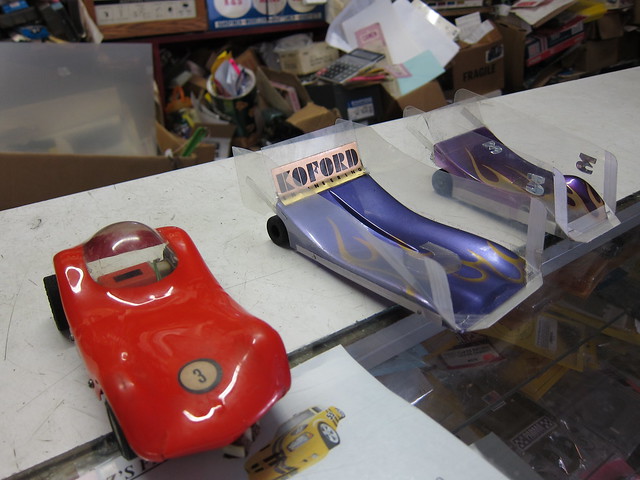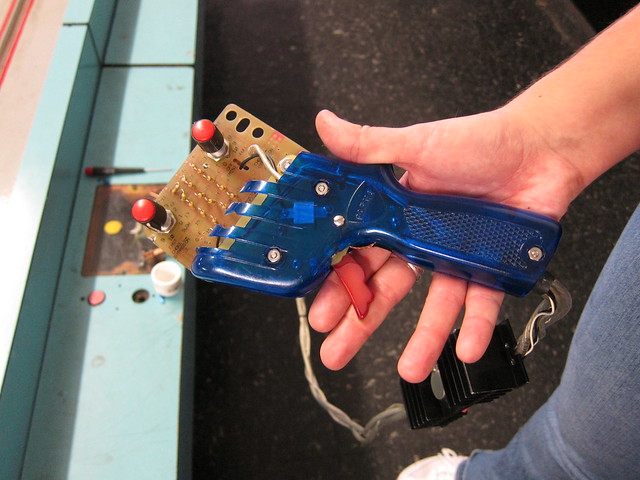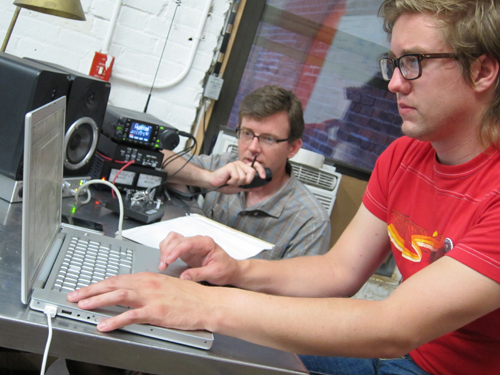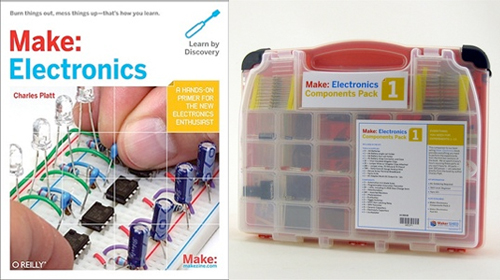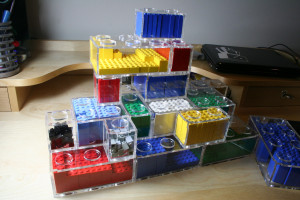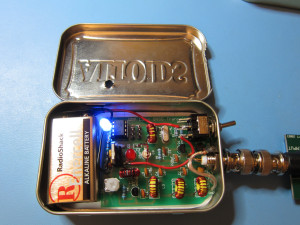
QRSS is a term used in ham radio to mean “very slow speed morse code”. QRPp means “using a very low power radio transmitter”. What happens when you combine these concepts? Small, simple, radios that can communicate over thousands of miles using about the same amount of power as a TV remote control.
The radio shown above is based on a kit by Hans Summers, G0UPL, that I picked up at the Four Days in May QRP convention. It uses a single-sided circuit board, with three transistors, one crystal, five toroids, a basic microcontroller, and a handful of resistors and capacitors. I added a 5v regulator, an LED to show the keying activity, and put it in an Altoids tin. The whole thing probably cost about $25 in parts, and took one evening to assemble.
After building it and tweaking it to get it on exactly the right frequency, I hooked it up to the dipole on the roof of NYC Resistor, and flipped on the power switch. My 100 milliwatt signal went up into the sky, bounced around between the ionosphere and the ocean a bit, and was picked up by a radio operated by Johan, ON5EX, in Belgium. He runs what is known as a “grabber” — a radio and computer combination that monitors the QRSS portion of the 30m band, converts the signals into digital spectrographic images, and publishes them on the internet.
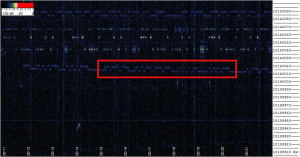
Here is a screen capture from Johan’s website shortly after I powered on my transmitter. It shows about 100Hz of spectrum (frequency is on the vertical axis) over 11 minutes (horizontal axis). My signal is in the center of the graph. It’s my call sign, W2VV, sent repeatedly in morse code (·–– ··––– ···– ···–) at about 10.140015 MHz. If you listened to this signal as audio, you would mostly hear static. The horizontal lines you see in the graph would come out as tones. The higher the line, the higher the pitch of the tone. My signal would sound like a tone that changes pitch ever so slightly up and down as the dots and dashes are sent. However my signal would probably be so weak as to be inaudible through the static. It is only discernible when converted to visual form and then compressed over a long period of time.
Belgium is about 3600 miles away from New York, which means this transmission achieved an amazing power efficiency of 36,000 miles per watt. Also, it occupied just a tiny sliver of bandwidth — only 5Hz, meaning many other people could share the same range of frequencies without interfering with each other. However you don’t get something for nothing in life, and the tradeoff in this situation is that very little information was sent. It took six minutes just to send my four-character callsign. Still, that’s not a bad deal for a $25 radio that fits in your pocket.
Visit my Flickr page for more photos of the build. Better yet, come to our Ham Party on Saturday and see it for yourself! And if you can’t make it to our place, visit one of the hundreds of other ham radio clubs across the country hosting public events this weekend in honor of ARRL Field Day.
72/73, Dave W2VV
